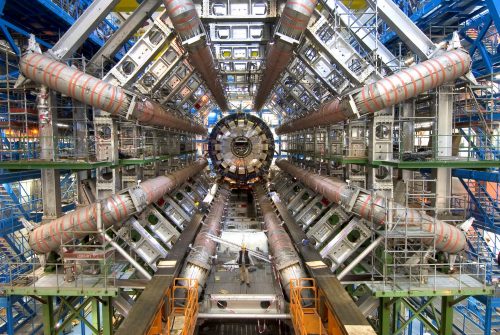Superconductivity at high temperatures: the H factor
29 January 2019 | Written by Mattia Ortino
An U.S. research opens new perspectives for the use and diffusion of the superconductors, where Hydrogen plays a leading role

Superconductors are among the materials that will revolutionize our future and their application at room temperature is one of the most anticipated goals in the world of physics, as well as of industry.
Among the fireworks of the beginning of the year, there were also those in the scientific community: on January 14th though, the discovery of superconductivity over 260 K (less than 13 degrees Celsius below zero) in the LaH10 compound (Lanthanum hydrate) was published.
The research was developed by a team from the Washington University, in collaboration with other U.S. institutes, and was published in Physical Review Letters, one of the most prestigious physics reviews in the world. In this paper, the researchers explain how it was possible to achieve this result through the metallization of hydrates (hydrogen compounds).
But let’s take a step back: what are superconductors and why do we talk about these temperatures?
The superconductors are materials discovered in the early twentieth century, that is when it became possible to liquefy the helium (this takes place at 4.2 K, or almost -270 degrees Celsius!). Thanks to the liquid helium, it was noticed that by placing it in contact with such alloys, the electric current could flow in them without any resistance, hundreds of times better than the best conductor in the world, the silver. Not only that: these materials showed a strange behavior towards magnetic fields, resulting in shielding them or even rejecting them completely (Meissner effect). The problem, it is understood, were these prohibitive working temperatures, not surprisingly called critical temperatures.
The evolution of the research. Over the years the research has made great strides, up to giving birth to concrete applications: wires, cables, magnets built with superconductors, with critical temperatures that often exceed well over 100K (about minus 173 Celsius), thus allowing to use liquid nitrogen instead of helium for their refrigeration. The latter, called High Temperature Superconductors (HTS) therefore allow a great saving: the price of liquid nitrogen today, if purchased in stock, is around 0.18E per liter. The applications of superconductors in different sectors are already concrete: trains, processors, medical equipment, devices storing energy without losses, are already current and available on the market. Despite that, a growth and expansion of the technologies obtainable using these materials has not yet fully convinced the world of Industry. The reason is simple: to build such cooling systems – so called cryogenic – is often inconvenient, not miniaturisable and not very attractive for those looking for a profit more or less in the short term.
The H factor. It is precisely the lightest element in the world that dominates the landscape of the research at such high temperatures: in the last ten years, there were several steps towards approaching these peaks.
The protagonist is always H, the hydrogen. Some superconductivity theories, since the ’60s, lead the community thinking that the lighter is the element becoming superconducting, the higher its critical temperature will be. The first attempts were done by trying to bind the hydrogen with S, the sulfur. The resulting foul-smelling compound suddenly reached the first big record of the recent era in superconductivity: 208 K as a critical temperature in 2014, in its H3S form, through the work of the German researchers of the Max Planck Institute. What they tried out was to metallize the hydrogen in a lattice with the sulfur, with which otherwise it would form only a gaseous compound. Unfortunately, such experiments include the application of enormous pressures, exceeding 150 GPa (more than a million times the atmospheric pressure), necessary to press and “pack together” these elements. The result is a superconductor as simple as stunning.
Over the years, it has therefore been decided to try binding hydrogen with other elements: phosphorus, palladium, uranium. The results encouraged researchers to challenge the difficulties of a new chemistry, made out of metastable elements (i.e. stable in a certain structure only at certain temperature and pressure conditions) and of working tools close to their physical limit (just think about the diamonds: used to press the hydrogen up to these pressures, often go broken thus frustrating the experiment). This time, with pressures around 180GPa, the co-founding element of hydrogen was Lanthanum, a so-called rare earth.
The samples prepared showed the expected breakdown in resistivity, an encouraging result because also predicted at the same temperature also by the theory. Once the Meissner effect has been confirmed experimentally, the total picture of this discovery will be given.
We can only hope that in Siberia, where in winter the average temperatures are often around -30 degrees Celsius, have heard about superconductors. The turning point is around the corner.




